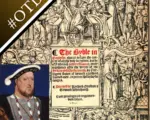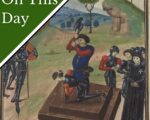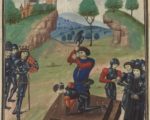
On this day in history, Edmund Beaufort was executed, bringing the male Beaufort line to an end; Sir James Tyrell, a man who allegedly confessed to murdering the Princes in the Tower, was executed; Anne Boleyn allegedly wrote a letter from the Tower; and Henry VIII ordered The Great Bible “to be had in every churche”…
[Read More...]


